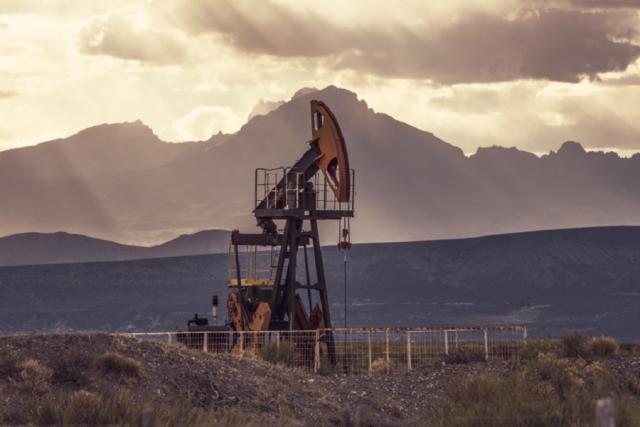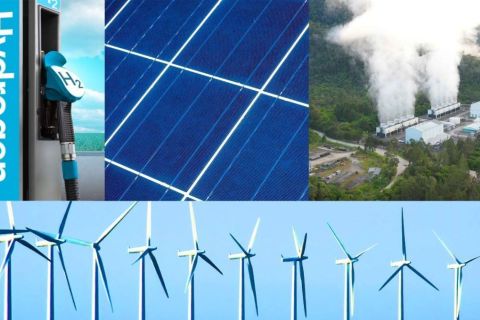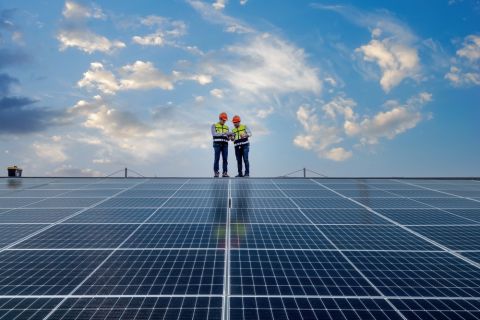
Gas production from Argentina’s Neuquén Province, home to the Vaca Muerta shale formation, reached 91.03 MMcm/d or about 3.21 Bcf/d in June of 2023, nearly surpassing a record high set last winter. (Source: Shutterstock.com)
Natural gas production in June of 2023 from Argentina’s Neuquén Province, home to the Vaca Muerta shale formation, almost surpassed a record high obtained just last winter.
“Undoubtedly, the full commissioning of the Néstor Kirchner Gas Pipeline (GPNK) in the coming days will have an exponential impact on gas production in our province,” Omar Gutiérrez, Neuquén Province governor, said July 20 in a press release issued by the province’s ministry of energy and natural resources.
“As we have been demanding for a long time, the transportation infrastructure is essential for the productive leap of Vaca Muerta” shale production, Gutiérrez said.
Gutiérrez said the GPNK was the first major step for the province to boost production and eventual exports. The province is also eying a call for bids for the second stage of the pipeline, which will allow Argentina to halt its reliance on Bolivian gas imports along the northern Argentine gas pipeline and instead export its gas to Bolivia and neighboring countries Paraguay and Brazil.
The first stage of the GPNK spans from Tratatayén, in the heart of Vaca Muerta, to the town of Salliqueló in the province of Buenos Aires. The second stage will span roughly 570 km from Salliqueló to San Nicolas in the province of Santa Fe.
From December to February—Argentina’s summer months—the country’s shale gas production is sufficient to cover domestic demand with excess volumes available for export. However, during Argentina’s austral winter months between June and August, production is insufficient to cover even domestic demand, forcing the country to rely on costly LNG exports and piped-gas from Bolivia when the volumes are available.
Gas production in Neuquén in June of 2023 was 91.03 MMcm/d or about 3.21 Bcf/d, up 3.33% compared to May of 2023 and up 0.93% compared to June of 2022, according to the province’s energy ministry.
Provincial production in June rose mainly due to higher volumes in the Fortín de Piedra, Aguada Pichana Oeste, Rincón del Mangrullo, El Orejano and Sierra Chata areas, but came in just shy of August 2022's record high gas production of 91.5 MMcm/d, or 3.23 Bcf/d.
The U.S. Energy Information Administration (EIA) estimates Argentina has technically recoverable shale gas resources of 802 Tcf—of which 308 Tcf are found in the Neuquén Province—second only to China’s 1,115 Tcf of recoverable shale gas.
The continued rise in Vaca Muerta gas production will allow Argentina to boost production for domestic consumption and piped-gas exports and drastically reduce the country’s need for piped-gas or LNG imports, greatly reducing its import bill.
Higher Vaca Muerta production is also needed to feed a planned 25 million tonnes per annum LNG facility proposed by state-owned YPF SA and its Malaysia counterpart, Petronas.
RELATED:
Argentina’s LNG Project to Require $51 Billion Over 15 Years
Argentina Goes for LNG Exporting Glory
Oil production falls as fracking activities shift
Oil production in Argentina’s Neuquén province reached 321,135 bbl/d in June of 2023, down 1.87% compared to May of 2023 but up 19.94% compared to June of 2022, the provincial ministry said in its release. The largest oil production declines were in the Bajada del Palo Oeste, Cruz de Lorena, Los Toldos II Este and Loma Campana areas.
The decline in oil production in June came about as a result of “lower oil well connections due to a shift in fracturing activities and completion of gas wells in March, April and May due to the start of winter and injection commitments under [Argentina’s] gas plan, as well as the limited availability of fracturing equipment to respond to demand,” the ministry said.
The ministry expects oil production to rebound in line with new pipeline capacity coming online in August, since the Otasa pipeline to Chile was inactive due to weather related issues.
Gutiérrez said oil production was expected to rise rapidly in the coming months due to the reactivation of the Otasa pipeline and expansion activities that Oldelval, an Argentina-based midstream company, is progressing in order to ship oil to Bahía Blanca in the province of Buenos Aires.
Recommended Reading
Initiative Equity Partners Acquires Equity in Renewable Firm ArtIn Energy
2024-04-26 - Initiative Equity Partners is taking steps to accelerate deployment of renewable energy globally, including in North America.
Energy Transition in Motion (Week of April 26, 2024)
2024-04-26 - Here is a look at some of this week’s renewable energy news, including the close of a $1.4 billion decarbonization-focused investment fund.
No Silver Bullet: Chevron, Shell on Lower-carbon Risks, Collaboration
2024-04-26 - Helping to scale lower-carbon technologies, while meeting today’s energy needs and bringing profits, comes with risks. Policy and collaboration can help, Chevron and Shell executives say.
Solar Sector Awaits Feds’ Next Move on Tariffs
2024-04-25 - A group of solar manufacturers want the U.S. to impose tariffs to ensure panels and modules imported from four Southeast Asian countries are priced at fair market value.
Solar Panel Tariff, AD/CVD Speculation No Concern for NextEra
2024-04-24 - NextEra Energy CEO John Ketchum addressed speculation regarding solar panel tariffs and antidumping and countervailing duties on its latest earnings call.






